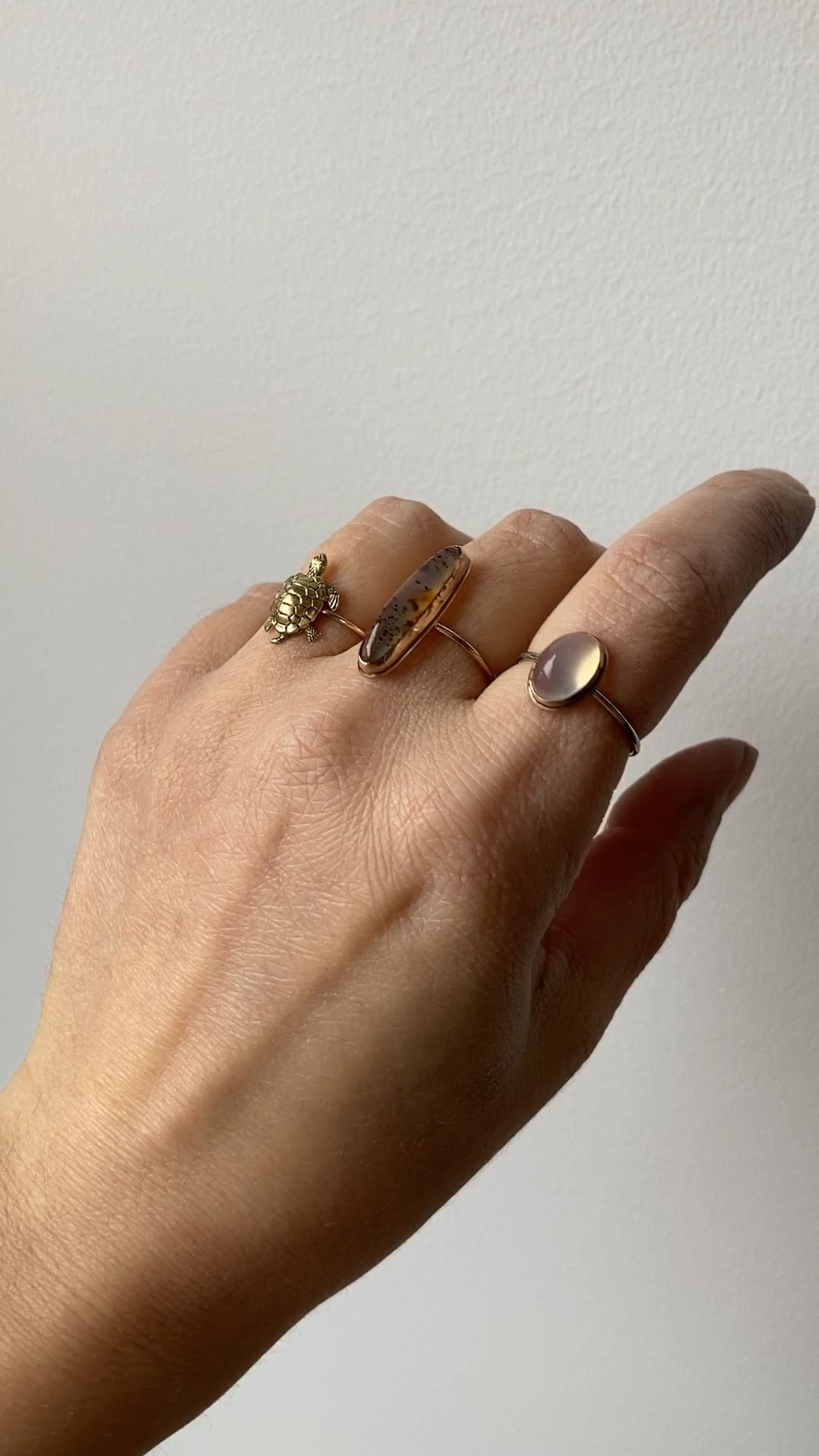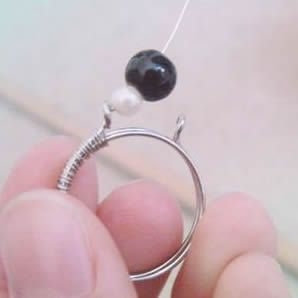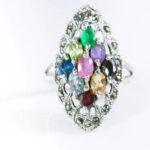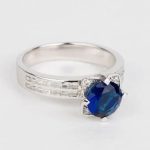Jewelry making and beading is a fun and creative activity that involves creating various decorative items such as necklaces, earrings, bracelets, and pendants. It is possible to use a wide variety of materials to make beautiful and unique pieces of jewelry, including beads, gems, leather, wire cutters, pliers and crimps.
Jewelry making and beading can also include the use of special tools such as saws or dies. Beading is a process where gemstones or beads are wired onto a piece to create intricate designs that are both beautiful and elegant.
There are many types of jewelry makers and beaders available for those looking to start this hobby or enhance their already existing skills. For beginners who have never tried any type of crafting before there are plenty of basic tutorials available online which will introduce the basics of jewelry making.
Some people prefer just focusing on one type of jewelry making such as leatherworking or wire-wrapping which doesn’t require them to know all the steps involved in advanced methods like setting stones in metal frames.
More experienced jewelry makers might choose to focus on more complex projects like micro soldering or fine metalsmithing. With these types of crafts it is always good to spend some time perfecting technique because they often involve more detail than other kinds of jewelry-working activities.
With practice it’s possible to achieve higher levels of detail even with intricate parts like molds which require high precision when cutting designs into metals. Finally there are high level craftsmen who specialize in what’s known as custom fabrication which means they can design pieces from scratch without relying on standard patterns used by the averageperson crafter.
The History of Jewelry Making & Beading
Jewelry making and beading is an art form that has been around for centuries in multiple parts of the world. Data from archeological sites even show that Neanderthals were using shells and stones as beads over 100,000 years ago. The art of jewelry making really began to take shape in many different cultures all over the world in Ancient Egypt, Greece, and Rome.
In these early civilizations, jewelry was thought to bring power and protection, as well as serve as a status symbol of wealth. People would create jewelry from gold, silver, enameled glass beads, semi-precious stones like lapis lazuli and carnelian. Jewelry was also crafted out of materials such as waxed thread and hemp twine.
The Middle Ages saw an increased refinement in the art of jewelery making & beading with intricate pieces being created. Charms took on a larger role during this time with religious symbols being incorporated into necklaces, rings and charms.
During the Renaissance period metalwork became increasingly popular due to advancements in technology resulting in more complex works being designed with shapes such as hearts, circles and stars appearing frequently amongst jewellery styles. This period is also marked by the use of Chandelier earrings which are still popular today and made from items like pearls or gemstones set on metal frames.
In Victorian times came a huge surge in beaded jewellery with Seed Beads becoming very popular during this era. These delicate little beads typically measure 1mm-2mm each and were inventoried together by colour in a whole host of shapes including hearts, stars triangles etc., they became known collectively as ‘Victorian Seed Beads’.
The Edwardian era saw the beginning of Art Deco inspired pieces featuring bold coloured semi precious stones such as Citrine & Amethyst set into geometric designs – this style was hugely influential going into the heyday of fashion jewellery design & modern trends – the roaring twenties.
To conclude historically we could say that each age has left its mark on the ever evolving artform that is Jewelary Making & Beading. Today there are jewelry makers across all continents creating their own unique works incorporating some traditional techniques with other more modern styles – therefore keeping the cycle alive for generations to come.
Advantages Of Jewelry Making & Beading
Jewelry making and beading have quickly become popular hobbies over the past few years. Jewelry makers and beaders can easily make and customize pieces of jewelry for themselves or as gifts for friends and family members. This type of craft has a wide range of advantages and provides a rewarding hobby for anyone who wants to be creative.
One of the major advantages of jewelry making is that it is fairly simple to learn. There are many tutorials available online, in addition to how-to books from local craft stores, that can teach newcomers the basics. Even beginners can start with something relatively simple such as bead weaving or stringing, for a quick start into the world of jewelry making.
For more experienced jewelry makers, there are lots of advantages too. Making custom pieces allows you to create unique items that cannot be bought in stores, giving them an edge when looking for gifts or selling their work online or at local markets. Additionally, being able to set your own prices allows you to make things affordable while still having them produce the desired items they’re looking for.
With the right tools you really open up a lot of options when it comes to using materials such as metals, stones, beads etc. In addition, supplies like wire come in many different types with different thicknesses so you can choose which is best suited for a given design.
Finally, one important advantage of jewelry making is that it actually provides an avenue for stress relief through creativity – much like other forms of art do.
Making something with your two hands and then wearing what you made (or giving it away) gives an immense amount satisfaction not just from achievement but from seeing one’s creations admired by others.It not only reduces anxiety levels but also helps relax both body and mind after a long hectic day – another bonus when pursuing this hobby.
Essential Supplies and Tools for Jewelry Making & Beading
There is an endless amount of materials and tools used in jewelry making and beading. Basic supplies like pliers, wire cutters and beads are available at most craft shops or online. Additionally, specialty items such as clasps or findings can also be purchased online. Everyone will have different tastes and needs when it comes to their style of jewelry making, so having a wide selection of tools is essential for getting the perfect look.
Beginner jewelry makers may want to start with the basics: a pair of round-nose pliers, chain-nose pliers, wire cutters, needles, jump rings and seed beads. All these items can be found in one kit which is affordable for beginners just starting out.
It’s also important to get comfortable using the tools before moving on to complex project styles such as wire work or bead weaving. As you become more experienced as a jewelry maker you may want to add specialized tools such as crimping pliers or an engraver to your toolbox.
In addition to quality tools, selecting the right beads and findings for making handmade pieces is essential too. Jewels and buttons can come in many shapes and sizes including crystal glass beads or metal buttons in various finishes which can create stunning effects if paired together correctly.
Gold-plated clasps are ideal will give every finished piece an elegant touch while threading elastic cords let you easily create stretchable designs such as a bracelet or anklet that fit perfectly on your wrist or ankle. Whatever your style might require – from charms and Swarovski birthday charms to log cabins made from button shanks; these items are available both online and in stores alike so finding what suits your creative pieces becomes easier than ever before.
Jewelry Making & Beading Techniques & Design Principles
Jewelry making and beading offer the opportunity to create beautiful fashion pieces for yourself or for gifts. Knowing the basics of both jewelry making and beading is key to creating something that is one of a kind. The first step in understanding these art forms is learning about some of the basic jewelry making and beading techniques.
This includes tools such as pliers, wire cutters, bead boards and threaders. Then you’ll learn how to use the tools to craft beads together with thread and even embellish your work with tiny gemstones.
The next step in mastering jewelry making and beading is learning about design principles such as color, shape, texture and scale. Using a combination of scale, line, shape and proportion can help guide your work when laying out designs on a bead board or paper template.
Learning how to combine several design elements will help ensure cohesive compositions such as necklaces, bracelets or earrings that perfectly express individual style or mood. Color is also another important design element; understanding what colors are complementary or analogous can make or break the look of any final piece.
Finally, once you have mastered the basics of Jewelry Making & Beading Techniques & Design Principles it’s time to start having fun. Experiment with different techniques like crimping pearls onto a string without using clasps to explore more intricate designs than ever before.
Use new semi-precious gemstones to add sparkle and luster to your creations while pushing yourself further into unknown realms within this beloved craft practice. Regardless if you are an experienced artisan looking for a challenge or a beginner just getting their feet wet with this craft; Jewelry Making & Beading Techniques & Design Principles are sure to inspire creativity while providing hours of fun-filled learning opportunities ahead.
Insider Tips To Achieve Success with Jewelry Making & Beading
Jewelry making & beading is a great passion that has been around for centuries, but it can also feel overwhelming to first-time beaders. Starting as a beginner can feel intimidating but with the right tools, knowledge and practice you will be creating stunning designs before you know it. Here are some insider tips to get you started and on your way to becoming an expert jewelry maker & beader:
First, research what type of jewelry making & beading techniques best fit your style. There is a variety of options from traditional jewelry work such as weaving and brass accents to more detailed techniques like seed beadwork. Developing your skill with basic techniques early on will make more intricate projects easier down the road. Having an understanding of where and how materials come together will make all subsequent projects run smoother.
Second, shop in more than one store for supplies and materials such as beads, findings, threads, wire and kits. Beading stores usually have everything that you need, but you may want to explore craft stores or online stores for additional items such as chainmaille kits or specialty gemstones.
Comparing prices across different outlets is a great way to get discounts over quality supplies at a lower price point. Keep in mind which materials work best with the type of jewelry making & beading technique that interests you most so you’ll always have what’s needed when it comes time to start creating your piece.
Thirdly, practice makes perfect – especially when it comes to jewelry making & beading. Many beginners like to focus too heavily on specific end results without putting in the necessary time mastering basics first. Take things slow by starting out with easy projects like simple necklaces that only use a few colors before moving onto more complex bracelets requiring dozens of components and colors.
Practicing the same design several times can improve proper knotting skills as well as technique control which will increase confidence in future projects. Additionally, try out new techniques for every new piece created – this keeps each project challenging and incrementally increases skill level over time so even though each piece comes together differently from the last its actually made from similar fundamentals at its core.
Popular Jewelry Making & Beading Projects
Jewelry making and beading can be a very enjoyable and rewarding hobby. With so many different types of beads, materials, and tools available nowadays, it is easy to get overwhelmed. Whether you’re new to jewelry making or an experienced artist, there is so much out there to choose from. To make things easier, here is a guide to the most popular jewelry making and beading projects.
Macrame has become one of the hottest trends in jewelry making and beading; this type of knotting involves intertwining threads in intricate patterns to create beautiful pieces of jewellery with a bohemian vibe. A great beginner’s project if you don’t yet have experience with macrame is creating friendship bracelets using thin cotton cord – these are perfect for kids and adults alike.
You can also use other materials such as leather or suede for more elaborate designs. Once you master the basics of macrame you can start exploring other techniques like kumihimo and even knotting gemstones together with wire.
Beadwork which involves threading small items (beads) onto string or wire to form intricate patterns, has been around since ancient times but still remains one of the most popular forms of craft today. It is also quite versatile as you can play around with colors, shapes and sizes, using seed beads through to larger stones such as turquoise or coral – the possibilities are endless.
Whether you’re looking for something simple like chokers or want to try your hand at more complex earrings with multi-dimensional stitches such as peyote stitch or herringbone stitch – beadwork opens up endless possibilities for any skill level.
Wirework involves manipulating metal wires into detailed structures and shapes by hammering, wrapping or plaiting them together. From sculptures that weave in your favourite gemstones through to chandeliers composed entirely out of pearls – anything goes when it comes to creating amazing works of art from wire. The trickiest part might be getting used to tools like round nose pliers but once you get used working with wire its uniqueness compared to other jewellery makes it incredibly rewarding.
Recap & Resources for Further Learning & Creation
Jewelry making and beading have been popular hobbies among many people in all walks of life. Crafting beautiful, unique pieces that can replicate your vision is a fun and therapeutic experience.
The basics of jewelry making consist of stringing, wire wrapping and knotting using different kinds of materials such as glass, semi-precious stones, natural beads, pearls and metals. These techniques are essential to the foundation of jewelry making and will be essential for the beginner’s journey in becoming an adept designer.
Recap: As mentioned above, there are three main techniques for jewelry making; stringing, wire wrapping and knotting. Each of these methods require different materials to create varying effects for one’s design. For example, with stringing various types of beads and pendants can easily be combined to create stunning necklaces or earrings.
Wire wrapping is important when making hoop earrings and other intricate earrings designs. Lastly knotting allows users to add a textured appearance to designs through the use of matching thread and accent stones like pearls or agates.
Further Learning Resources: To further sharpen one’s skills in jewelry making & beading there are plenty of resources readily available on the web that teach basic skills/methods but also give great ideas as to how you can go about creating more complex works e.g instructional videos, books written by professionals etc.
Furthermore many jewellery related websites offer advanced tutorial classes delivered directly from professionals themselves allowing people to really delve deeper into their practice & knowledge they have acquired thus far..
This type of learning is invaluable since it gives those who learn from direct experience the opportunity to overcome common pitfalls quickly – especially when it comes down the details & finishing touches which inevitably make any piece stand out.
Creating New Work: Combining different elements such as contrasting colors or shapes creates an abundance of creative possibilities for aspiring jewelers that gives them excellent opportunity for exploration & discovery as well as potentially open up new lenses through which projects/pieces could be viewed from.
That said another avenue would be through “recycling” existing pieces (where possible) – mainly focusing on reusing existing materials where feasible rather than buying brand new components all the time(although this might not always be the ideal option depending on project).
Ultimately another great way keep your work unique is by adding personal flourishes such as engraving monograms onto metal components prior to assembly etc – again it enables you edge yourself away from copycats & increase your potential visibility.

Welcome to my jewelry blog! My name is Sarah and I am the owner of this blog.
I love making jewelry and sharing my creations with others.
So whether you’re someone who loves wearing jewelry yourself or simply enjoys learning about it, be sure to check out my blog for insightful posts on everything related to this exciting topic!





